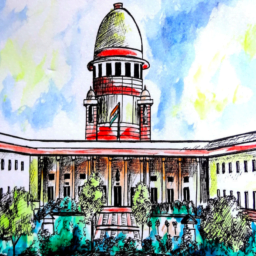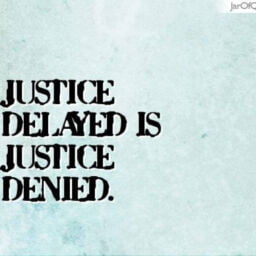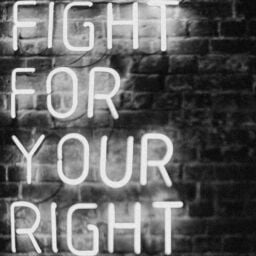Introduction
India as a country has been inherently ignorant about issues circumventing the deviant notion of gender diversity, largely because of its belief in a dichotomous categorization of gender; man and woman. In fact, the Indian diaspora, including the legal fraternity has displayed their lack of knowledge and a vague awareness of the term itself on more than one occasion, confusing it with the ‘sex’ and using the two interchangeably. Therefore, it is crucial that we get the basics down before beginning a ventured study on the subject and dive into legally intricate issues of protection and reformation. The category of people, labelled to be ‘different’ in regards to their gender identification has been mistreated, criminalized and oppressed since time immemorial and if true reverence of the spirit of the Constitution is to be seen, the rights of equality and dignity have to be ensured to this marginally scattered section.
The need for differentiation
Sociologists and scholars of human behavioural studies would agree on a clean and transparent demarcation between the terms of gender and sex, not only for better understanding but convalescent safeguards. Social scientists conceptually differentiate between sex and gender on the following stance; sex is the anatomical, biological and physiological characteristics associated with an individual, typically the differences in primary and secondary sex organs. Gender, on the other hand, is the socially and culturally distinguished patterns in behaviours and mannerisms associated with both the sexes. However, it is noteworthy that gender need not always be congruent with the sex assigned at birth and may not often be expressed with a rigid label. Sex and gender can differ according to the mental and psychological precepts of a human being. Thus, a binding statement here would be to understand that gender, cannot just be two, and cannot be restricted in a vacuum as per social guidelines. Gender can vary with varying human minds and sense of self.
Another critical apprehension required here would be a transparent understanding of the concepts of gender expression and gender identity. Gender identity is an individual’s interpretation and experience with gender and is more of an internally functioning phenomenon. Gender expression is how an individual chooses to express their desired gender through social, cultural, psychological or behavioural patterns. Gender identity, thus, demands greater individual autonomy. However, that is not to say that people should not be allowed to freely express themselves in terms of their chosen gender. They should be, by all means. Although our fight right now is with the grassroots and more pertinent problem of granting the right to self-identify. Once the citizenry is granted adequate and exemplary rights to identify themselves as per their whims, next levels hindrances like expression could be tackled.
NALSA Judgement and the Right to Self-identify
The zeal and need to self-identify and expressly define their own gender discourse had always been pulsating within the gender non-binary communities, the muffled voices gained a loud cacophony only in 2014 with the historic NALSA (National Legal Service Authority of India) judgement. On April 15th, 2014, a writ petition filed for recognition of third gender rights on behalf of NALSA and Laxmi Narayan Tripathi, an asserted trans woman, was brought to a landmark conclusion in the case which is now known as NALSA v. Union of India. The NALSA judgement was one of its kind and for the first time, brought the neglected trans community within the legal horizon and made legal rights accessible to them. The apex court interpreted Articles 14, 15, 16, 19(1)(a) and 21 on a broader scale and arrived at the conclusion that the Constitution did in fact seek to include members of the non-binary gender spectrum.
Article 14 of the Constitution guarantees equality before the law, and most importantly equal protection of the law, which by every means extends to all humans and citizens of this country irrespective of their gender identification. The SC also noted that the discriminatory prohibitions mentioned in Article 15 as well as Article 16, mentioned the term ‘gender’ and thus referred to not just physiological or anatomical differences between individuals but essentially included one’s own innate experience of gender. Thus, people perceiving themselves to be of any gender identity have just as much footing to be protected against crass discrimination by law. Further, the judgement deliberates on Article 19 (1) (a), which entitles every citizen to freedom of speech and expression. The expression portion of it comes into the picture when the threshold of discrimination pins on the right to self-express one’s gender through culture and social behaviour, remarks, clothing, mannerism or pronouns. The right to life and liberty mentioned in Article 21, which greatly impacts judicial proceedings in India and also entrusts the right to a dignified life, was rationalized in addition to proactively expressing the human need to lead a life through a window of one’s own chosen expressions.
Therefore, the Supreme Court made certain noteworthy decisions to alleviate the stagnant position of the transgender communities. The Court ordered the right to self-identify to be made accessible to persons of the majority who wished to identify as a gender not corresponding with their assigned sex at birth, without any medical examination or psychological evaluation. The apex court granted recognition to a separate gender category within the Indian legal and social sphere, called the ‘third gender.’ This acknowledgement was meant to extend the basic legal amenities to the transgender, transsexual and gender non-conforming population of the country and strengthen welfare measures by shedding light on their status as a socially and educationally backward class. The judgement also mandated the construction of shelters in every state for an ostracized and mistreated a lot of the deprived class and stressed to ensure the provision of a legal certificate for any declaration or change in gender identity. The Court, thus, was heavily in favour of authenticating the right to self-identify as part of a citizen’s rights.
The Transgender Persons (Protection of Rights Act), 2019 and why it’s problematic
The Transgender Persons (Protection of Rights Act), 2019 solemnly grants people of the transgender community and other genderqueer groups, the right to self-identify themselves as a third gender. The Act was brought as an aftermath of the 2014 judgement and assured various provisions including punishment for discrimination and crimes against the trans population, welfare schemes and prohibition against discrimination in educational institutions, social settings and workplace. Despite the progressive and promising resolutions that the Act provides, it is still viewed as a vague and debatable Law by the trans community itself.
The foremost problem that the Act posed was the procedural mechanism that mandates trans person certificates to be obtained from the office of the district magistrate. The process for issuance of the certificates is supposed to be supervised by a screening committee with no set regulations for its administrative functioning. Activists and experts have raised the concern that this mandatory screening by the local bodies, in all possibilities, could turn into an unmitigated source of humiliation for the already vulnerable community. Thus, many people believe that the purpose of granting the right to self-identification is defeated when people are subjected to cumbersome procedural scrutiny. The same Act which discourages physical or biological examination for determining gender, instructs citizens to go through an external psychiatric and validation analysis to prove their gender-queerness. Moreover, to identify particularly as a male or a female, a transgender individual is required to go through a sex reassignment surgery and obtain a revised certificate for the same.
The obscure certification process is not the only doubtful element attached to this Act. The provisions for criminal punishment against offences committed to a transgender woman are far less introspective in nature. The crime of rape, with the same degree of inhumane derogation attached to it, can attract up to a death penalty when committed to a cisgender woman. However, for their transgendered equivalent, the same offence would carry a maximum sentence of two years with a fine. This distinction in punishment reflects the level of regard shown to the people who choose to live their life with a gender different from the one they were born with. In their already repressed lives, the first thing they would need and rightfully demand is equal protection of the law, just like every other citizen of the country. Again, trans men find no place in the mentions of whatever little protection is ensured to trans women. Then again, it’s no news that our country is not very diligent at safeguarding the rights of men against sexual offences. However, just because it’s widely ignored does not make ignorance acceptable.
The Transgender Persons (Protection of Rights) Rules, 2020, has caused another uproar as it aims to make things more repressive for the trans community. The new guidelines are set to take away the right to self-determination by making it mandatory for people claiming a trans identity to be medically examined. This has made the right to freedom of expression of gender more dubious and restrained and is considered a daylight breach of fundamental rights.
Conclusion
Transgender protective and regulatory laws in India, especially the rules concerned with self-identification are regressive in nature and should be reformed to make them more inclusive, protective and defensive so that the stigma and the unpopular attitude shown to the Indian trans community might be curbed to some extent.
Author(s) Name: Anjali Sah (Hidayatullah National Law University, Raipur)
















